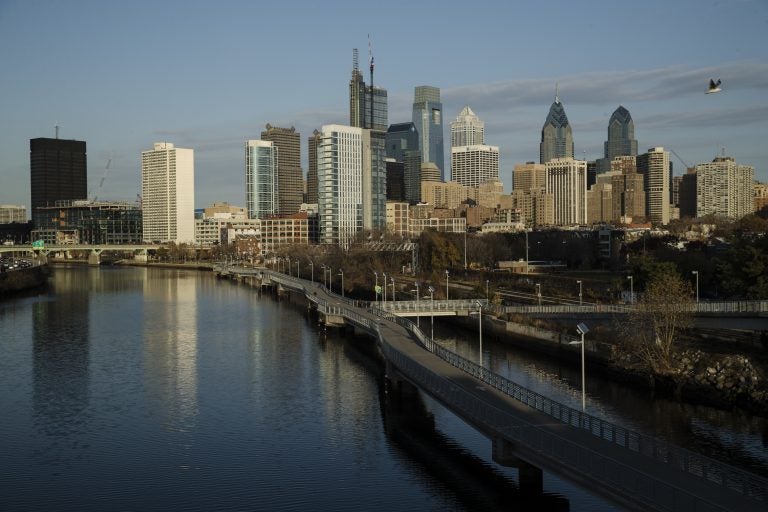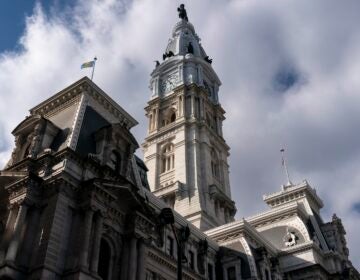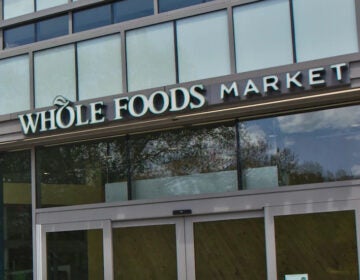New Philly program aims to get ‘eds and meds’ to buy locally
The effort brings together Philadelphia’s Department of Commerce and the Economy League of Greater Philadelphia, along with 20 founding partners and supporting organizations.
Listen 1:09
Shown is the Schuylkill River and view of the Philadelphia skyline, Thursday, Nov. 30, 2017. (Matt Rourke/AP Photo)
Philadelphia’s 34 hospitals and universities spend more than $5 billion every year buying goods and services – from desk chairs to lab equipment to paper cups.
A new initiative formally launched Wednesday targets the city’s stark inequality by convincing these powerful institutions to buy more goods and services close to home.
The push, called Philadelphia Anchors for Growth and Equity — or PAGE — brings together the City of Philadelphia’s Department of Commerce and the Economy League of Greater Philadelphia, along with 20 founding partners and supporting organizations. PAGE grew out of research by the city controller’s office in 2014, and it borrows lessons from cities such as Cleveland and Baltimore with similar initiatives.
The idea is to intervene along various points in the supply chain – from the massive institutions that buy, to the supply chain companies that bring them goods, to vendors themselves — in order to keep a half billion dollars usually spent elsewhere in Philadelphia to create up to 5,000 jobs.
To do that, PAGE is pooling data about what hospitals and universities buy. It’s then examining that information seeking opportunities for local purchasing; engaging Aramark, Sodexo and other supply chain companies; and positioning local companies to provide goods and services to massive organizations.
“We’ve created a table where all of the institutions are willing to work together to create local growth,” said Jeff Hornstein, executive director of the Economy League of Greater Philadelphia.
One area where that’s already causing ripples? Hospital laundry services.
Through conversations between hospital administrators, participants realized that they were all using medical laundry facilities in other states.
“Something like 50 or 60 million pounds of hospital laundry is exported 100 miles each day,” said Hornstein, to laundry plants in North Jersey and suburban Baltimore. “No one is happy with it … but no individual institution is big enough to induce a laundry company to build a plant here.”
Through coordination spurred by PAGE, officials at two laundry companies — HCSC Laundry of Allentown and FDR Services of New York — are contemplating opening a local facility, according to Hornstein.
The initiative also hopes to avoid some pitfalls of programs in other cities.
In Chicago and Baltimore, for example, similar programs “ended up doing a pretty major pivot in response to their partners and seeing what’s most effective,” said Mariya Khandros, director of shared solutions at the Economy League whose master’s thesis focused on such programs. “What doesn’t work is to go in and be very rigid.”
One explicit aim of the program is to bridge the sometimes strained relationship between well-endowed, elite institutions and residents in a city where a quarter of the population lives in poverty.
“It’s not that the institutions caused the poverty … and there’s been something of a disconnect between the employment opportunities at those institutions and the residents surrounding them,” said Hornstein. “It’s exciting that all of those institutions are now getting religion around this.”
WHYY is your source for fact-based, in-depth journalism and information. As a nonprofit organization, we rely on financial support from readers like you. Please give today.




